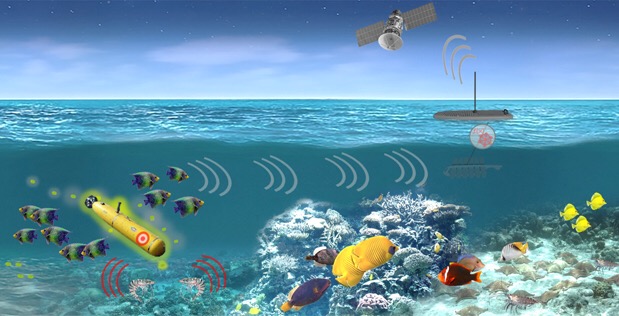
Five Teams of Researchers Will Help DARPA Detect Undersea Activity by Analyzing Behaviors of Marine Organisms
DARPA first announced the PALS program in February 2018 with the goal of incorporating biology into new solutions
for monitoring adversary movements across the seemingly endless spaces of the world’s oceans and seas.
Northrop Grumman Corporation,
will record and analyze acoustics from snapping shrimp and optical activity by bioluminescent organisms.
the Naval Research Laboratory,
will integrate microbial organisms into a sensing platform to detect and characterize biological signals from natural microorganisms that respond to the magnetic signatures of underwater vehicles.
Florida Atlantic University,
will record and analyze vocalization cues from goliath grouper in tropical and subtropical environments.
Raytheon BBN Technologies,
will use snapping shrimp as sources of opportunity for long-range detection, classification, and tracking of underwater vehicles.
the University of Maryland Center for Environmental Science,
will tag black sea bass with sensors to track the depth and acceleration behaviors of schools of fish that are perturbed by underwater vehicles.
DARPA is also funding the Naval Undersea Warfare Center, Division Newport,
to develop a seafloor system that uses a hydrophone array and acoustic vector sensor to continuously monitor ambient biological sound in a reef environment for anomalies.